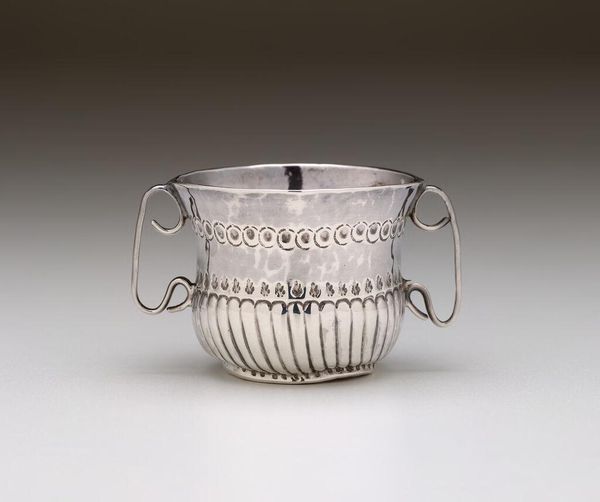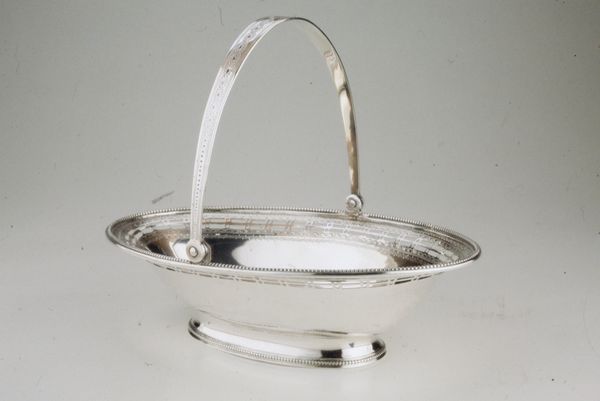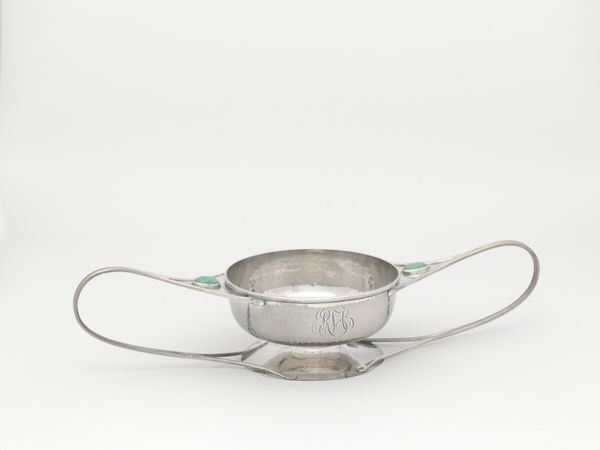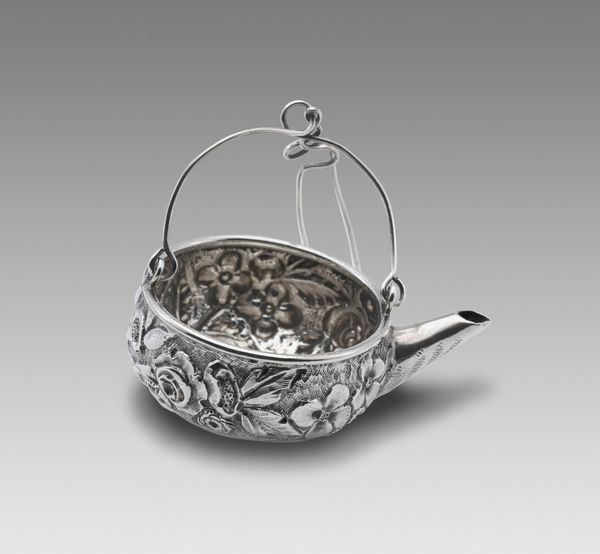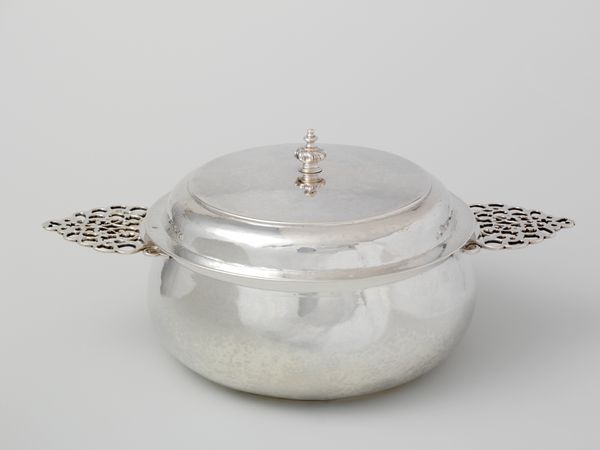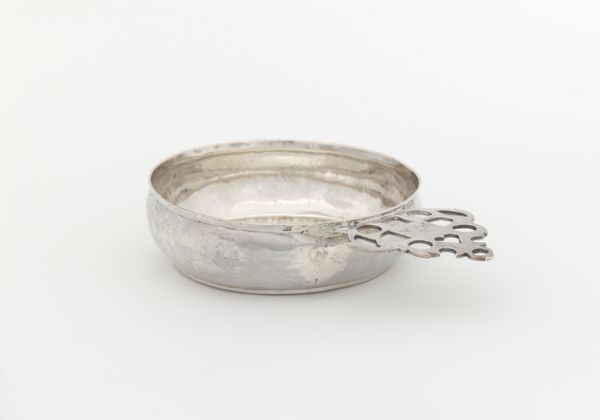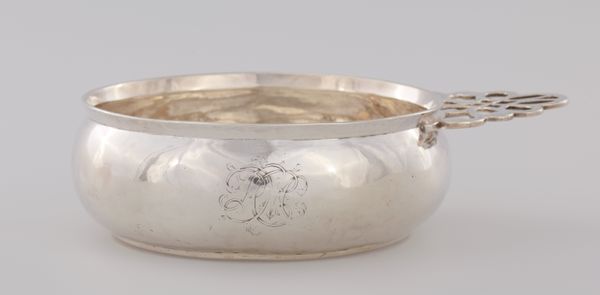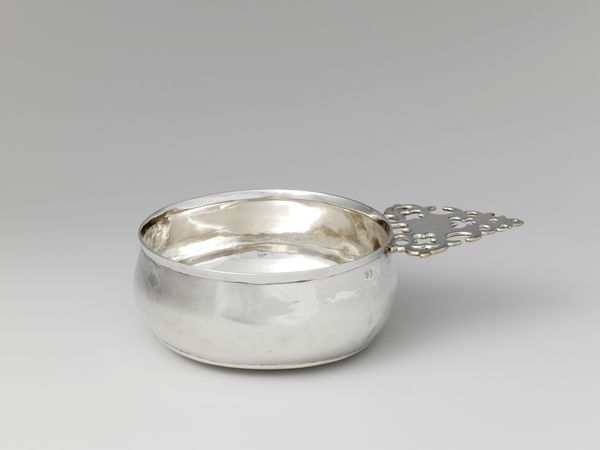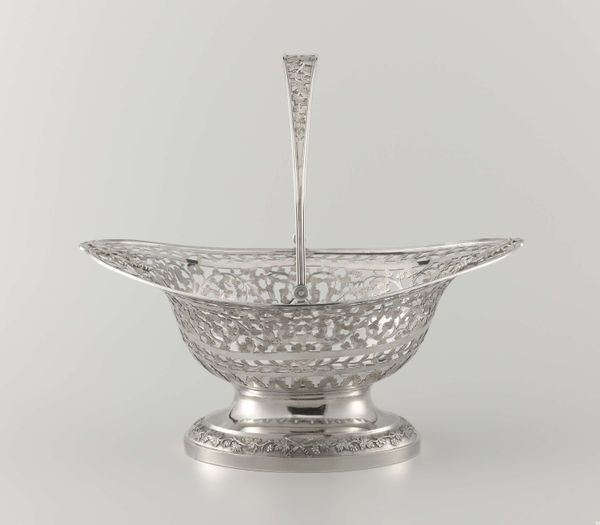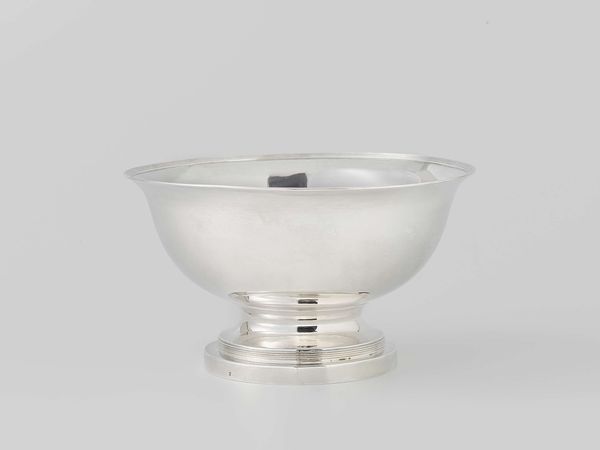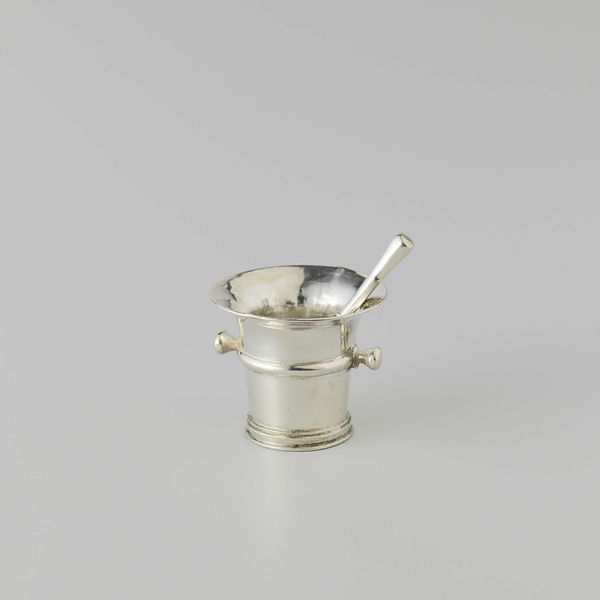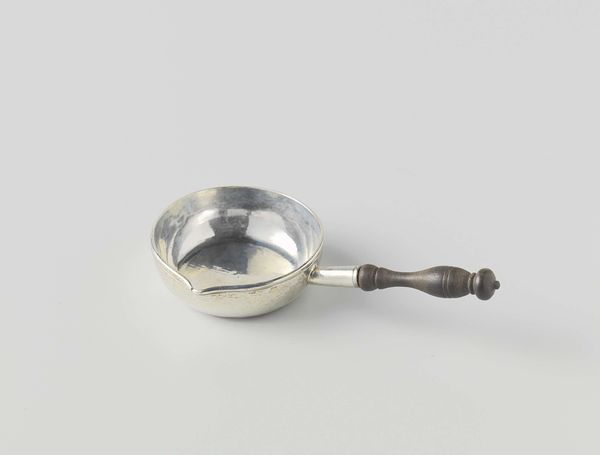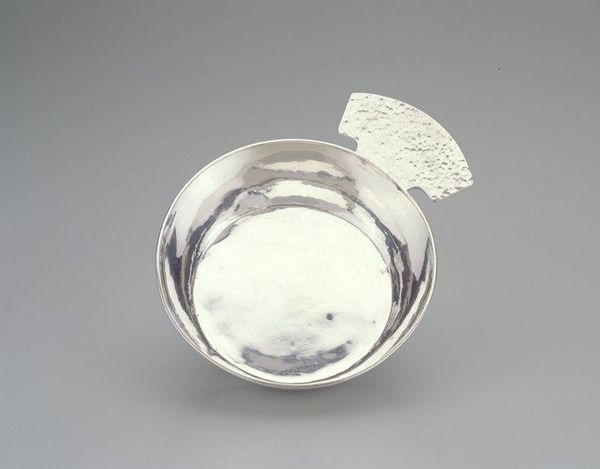
silver, metal, sculpture
#
silver
#
metal
#
jewelry design
#
jewelry
#
sculpture
#
jewelry
#
decorative-art
Dimensions: Overall: 2 1/4 x 1 3/4 in. (5.7 x 4.4 cm); 17 dwt. (26.1 g) Clip: L. 3 3/8 in. (8.6 cm)
Copyright: Public Domain
Curator: This is a silver tea strainer created in 1845 by Andrew Ellicott Warner. It currently resides here at the Metropolitan Museum of Art. Editor: The intricate floral details and bright silver give off a certain feminine energy, a relic of domesticity preserved in a very elegant and decorative way. I find the pristine condition fascinating. Curator: Indeed, objects such as this reveal much about the social rituals of the 19th century, particularly regarding the role of women and the importance placed on presentation and refinement. Tea ceremonies were highly gendered social events. The strainer itself wasn’t just a functional object, but also a display of wealth and status. Editor: I agree. How might the object's purpose—separating tea leaves—connect with larger questions of refinement, separation, and control? Was the tea itself a controlled substance under British rule, and how does that relate to class and social dynamics in the Americas at the time? Curator: Absolutely. The strainer's existence reflects colonial power dynamics; access to goods like tea reflected societal hierarchies. It’s an example of material culture used to assert and reinforce social standings through rituals, taste, and etiquette. Editor: Right. It becomes something more than a simple kitchen utensil, embodying issues of gendered spaces and commodity exchange tied into trade and colonial expansion, don’t you think? These silver objects were almost exclusively created, maintained, and owned within wealthy white communities, as far as the records indicate. Curator: Precisely. The "Tea Strainer" underscores how seemingly mundane items often contain loaded historical narratives about power, gender, and cultural identity that intersect well beyond their domestic function. Editor: So, while initially the form communicated refinement and gentility, we also find narratives around colonialism, domestic labor, and social identity, too. Curator: Ultimately, it demonstrates that our interpretation of objects must consider not just their aesthetic value, but also the power structures and cultural narratives embedded in their creation, use, and preservation.
Comments
No comments
Be the first to comment and join the conversation on the ultimate creative platform.
